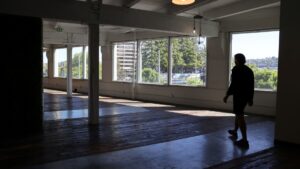A New Era for the U.S. Office Market: Insights from Extreme Investor Network
The U.S. office market has undergone a significant transformation in recent years, emerging from a prolonged period of distress. In a striking shift, the dynamics of office space are changing as demolition and conversion of existing properties begin to outpace new construction. According to fresh data from CBRE Group, this trend marks a pivotal moment in the commercial real estate landscape, potentially reshaping urban environments for years to come.
The Shift: More Space Gone Than Added
For the first time in at least 25 years, 2023 is projected to see more office space taken off the market than constructed. Approximately 23.3 million square feet of office space is anticipated to be demolished or repurposed in the 58 largest U.S. markets, dwarfed by a mere 12.7 million square feet in new office construction, as reported by CBRE.
This shift is not merely statistical; it’s a reflection of the evolving landscape of work and life in the post-pandemic world. The rise of remote work and hybrid models has contributed to record-high office vacancies, hovering around 19%. Yet as companies increasingly request employees return to in-person work, the office market is showing signs of recovery.
Positive Trends Amid Challenges
Despite the challenges, there are signs that the office rental market is stabilizing. Net absorption—a key metric measuring the amount of newly occupied space—has seen a positive trend over the past four quarters, following a drought of negative figures. Office leasing activity surged by 18% in Q1 this year, signaling a renewed interest in physical office space.
At Extreme Investor Network, we emphasize the importance of recognizing market opportunities, even in challenging environments. While some office spaces will inevitably fall victim to obsolescence, the trend toward converting these spaces into multi-purpose environments is gaining momentum.
The Conversion Advantage
As obsolete office space is removed from the market, the focus will shift to higher-quality properties. Major office REITs like Vornado, BXP, Alexandria Real Estate Equities, and SL Green stand to benefit as demand for prime office locations increases. In fact, developers are gearing up to convert an additional 85 million square feet of office space into thriving residential units over the next few years.
The potential for office-to-residential conversions can reinvigorate neighborhoods. An average conversion historically yields around 170 residential units, translating into tangible urban renewal. This metric can be particularly attractive to investors looking for opportunities in a transforming marketplace.
Navigating the Future: Challenges and Opportunities
However, substantial hurdles remain in the path of conversion. Rising costs in construction, labor, and financing pose challenges. The availability of suitable buildings for conversion may also diminish, further complicating the landscape.
At Extreme Investor Network, we believe in harnessing market data and trends to identify viable investment opportunities. The ongoing transformation in commercial real estate presents both risks and rewards—understanding these dynamics allows investors to make informed decisions.
Conclusion: A Cautiously Optimistic Outlook
The evolution of the U.S. office market signifies a broader shift in how we perceive and utilize workspaces. As more businesses adapt to hybrid work models and as older properties give way to innovative conversions, investors who stay ahead of the trends may find unique opportunities.
At Extreme Investor Network, we will continue to monitor these developments, providing our readers with insights and analyses that empower informed investment choices. The office market, once mired in uncertainty, may very well emerge as a dynamic arena for growth in the coming years.
Stay informed, adapt, and invest wisely!

